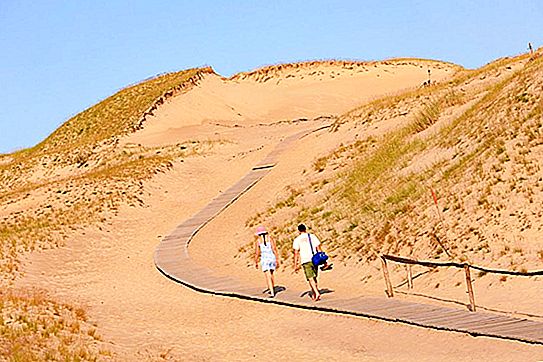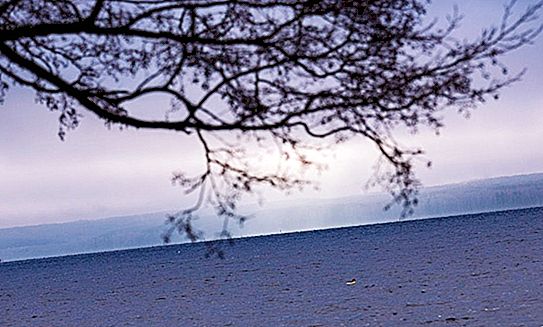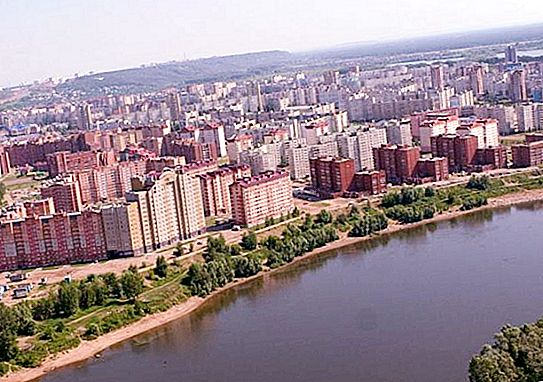Kaliningrad region is a unique region of Russia. First of all, due to its geographical location. In our article you will find a description of the nature of the Kaliningrad region, with photos and a story about the most interesting places. In particular, you will learn about the relief, climate, flora and fauna of this region.
Kaliningrad region: geographical location and diversity of nature
The Kaliningrad region is the native land for more than one million Russians. It is located in Eastern Europe and is an exclave of the Russian Federation, that is, it does not have land borders with its main territory. The region borders on Poland (in the south) and Lithuania (in the north and east). From the west, it is washed by the waters of the Baltic Sea.

The diversity of nature in the Kaliningrad region is simply amazing. Here, on a relatively small plot of land, you can see various types of landscape: sand dunes, coniferous forests, oak groves, lakes, swamps, lush meadows … The territory of the region is densely dotted with rivers, streams and streams, and its depths conceal real wealth.
We will now describe in more detail the nature of the Kaliningrad region, its relief, climate, vegetation, and wildlife.
Relief and minerals
The relief of the region is mostly flat (see map below). Maximum heights (up to 230 meters) are in the southeastern part of the region, where the Vishtynetsk Upland enters the borders of the Kaliningrad Region. Some land areas are located below sea level. Most of them are in the Slavsky district. These are the so-called polders - lands that are under constant threat of flooding. The average height of the region’s surface above sea level is only 15 meters.
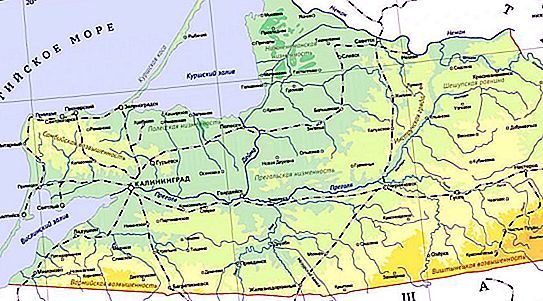
Another unique feature of nature in the Kaliningrad region is the presence of real sand dunes within it. They are found on the Baltic and Curonian spits. The largest of these dunes reach a height of 50-70 meters.
The bowels of the Kaliningrad region are rich in various minerals. The main wealth of the region is, of course, amber. According to geologists, it contains about 90% of the planet’s “sun stone" reserves. In addition to amber, in the Kaliningrad region there are deposits of oil, brown coal, rock and potassium salt, phosphate rock, sand and peat.
Climate and surface water
The climate of the Kaliningrad region is transitional from marine to temperate continental. The Baltic Sea has a significant impact on the weather and climate conditions in this region. So, average annual temperatures decrease from +7.5 ° C in the south-west of the region to +6.5 ° C in its north-eastern part. In summer, the air warms up here to + 22 … 26 ° C, and in winter, the thermometer can drop to –15 … –20 ° C. True, both prolonged heat and prolonged frosts are not typical for this region.
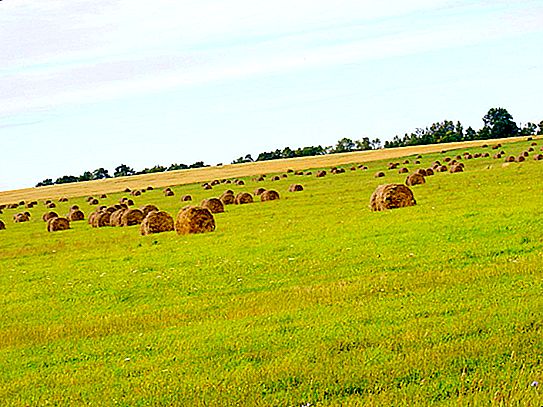
The average annual rainfall ranges from 600 to 750 mm. Most of them fall in the summer and autumn. Snow cover does not last long. In autumn, stormy winds often fly over the region, especially windy weather typical of the coastal zone.
The Kaliningrad region has a dense and well-developed river network. In total, 148 rivers flow through its territory. The largest of them are Neman and Pregolya. The basins of these two rivers cover almost the entire territory of the region. There are a lot of lakes in the southeastern part of the region. The largest among them - Vishtynetskoye - is located on the border with neighboring Lithuania.
Flora and fauna
The plant world of the Kaliningrad region has about 1250 species of higher vascular plants. Many of them were brought here from other regions, in particular from the Crimea and the Caucasus. The total forest cover of the territory reaches 18%. The most foresters in the eastern regions of the region are Chernyakhovsky, Nesterovsky and Krasnoznamensky. On the Curonian and Baltic spits, artificially planted forests play an important role in containing the sands that migrate deep into the continent.
All forests in the region are secondary; they were planted in the 18th-19th centuries. The main forest-forming species are spruce and pine. Also common are birch, maples, oaks, hornbeam, linden. In Zelenogradsky and Pravdinsky districts there are areas of beech forest, and near Zelenogradsk there is a grove of black alder.
The fauna of the Kaliningrad region has over 700 different species, of which 325 species are birds. The largest representative of the animal world is the moose. Roe deer, deer, fallow deer, wild boars are found here, and ermines, foxes, and martens are among the predators. By the 70s of the last century, wolves were exterminated.
Next, we will briefly talk about the most famous and valuable nature objects of the Kaliningrad region.
Curonian Spit
An amazing corner of nature in the Kaliningrad region is the Curonian Spit, located in the northwestern part of the region. This is a narrow strip of land, stretching for almost 100 km from Zelenogradsk to Lithuanian Klaipeda. Moreover, the width of the spit does not exceed 2 km. The national park founded here in 2000 became a UNESCO World Heritage Site. The most interesting natural monuments on the Curonian Spit are the Dune Efa, the famous “Dancing Forest” and the beautiful Swan Lake.
Vishtynetsk lake
This pond is called European Baikal for its depth reaching 54 meters. The border between Lithuania and the Kaliningrad region of Russia runs along the lake. The purest water, remoteness from large settlements, the richest avifauna - all this makes Lake Vishtynetsk an excellent place for a relaxing holiday and unity with nature.

